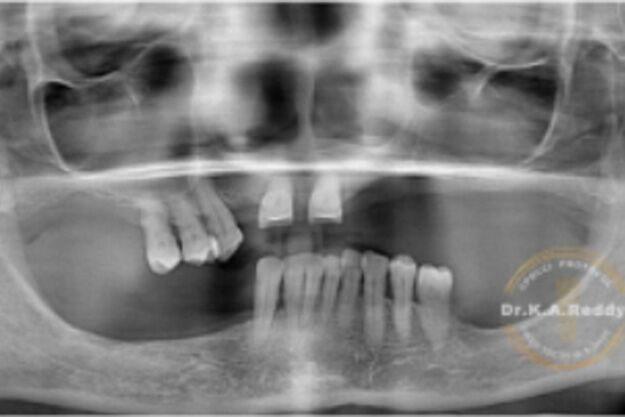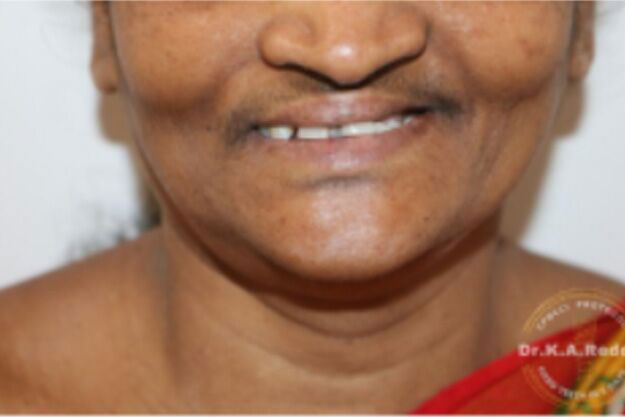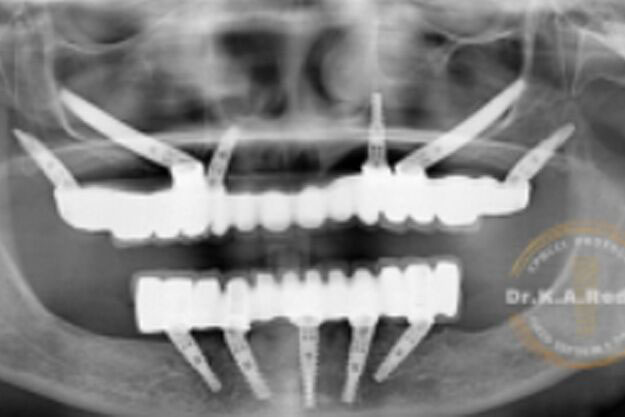Dental Bone Graft
Are they really necessary?
Not enough bone …. Do not loose hope Do not anguish if u have been told by your implantologist that u do not have sufficient bone and need BONE GRAFTS to place dental implants.
Have u ever heard the old adage “when u don’t use, u loose” this applies to jaw bone too. Your bone stays thick and tall when your teeth are there stimulating your bone, chewing forces will be transmitted through the tooth root to the underlying bone to keep the surrounding bone intact. If teeth are lost, jaw bone shrinks from disuse.
Jaw bone consists of two layers, the upper Alveolar bone that supports the tooth roots, is not highly mineralised and is prone to infection, this means that in case of any infection surrounding the tooth roots or in case of any gum disease, this bone resorbs resulting in tooth loosening. Underneath this bone is present the Basal bone which is highly mineralised and is not prone to any kind of infection.
Dental implants when placed in the traditional style in the alveolar bone due to its spongy nature requires 3 to 6 months in order to fuse together with the Implants to provide a stable foundation for the new teeth. In case of any infection or if the person has diabetis, this bone gives up there by leading to implant failure. In case of badly infected jaws, the alveolar bone will be any how lost owing to the infection, making it difficult to place Implants. This is when, Bone grafting procedure is suggested. Bone grafting is a surgical procedure that replaces missing bone. Bone has the ability to regenerate completely but requires a very small fracture space or some sort of scaffold to do so. Bone grafts may be, Autologous (bone harvested from patients body). Allograft (cadaver bone obtained from bone bank). Synthetic (made of hydroxyapatite or biocompatible substances). Bone grafts thus placed will have a reasonably good success rate but will come with its own set of problems.




Patient with severe bone loss rehabilitated immediately in less than a week using pterygoid Implants and zygomatic implants without using any bone graft.
DISADVANTAGES OF BONE GRAFTS
- Delayed treatment time: Patient has to wait for 4- 10 months for their teeth after mandibular block grafts and sinus lifts.
- Postoperative infection.
- Unpredictable healing.
- Less mineralised than native bone.
- Commercial BONE GRAFTS are very expensive.
- Requires additional surgical procedures.
During quite a few times the grafted bone doesnt take up or will not be suitable enough to with stand Implants. So why rely on the spongy Alveolar bone or the unpredictable grafted bone, when the native Basal bone which is highly mineralised and helps in immediate osseointegration of Implants is present in all.
Dental implants when placed in the Basal bone act as roots of the replaced teeth, the implant body made of Titanium, osseointegrates with the jaw bone, thereby providing a stable foundation to the replaced teeth.
The implant associated fixed replacement has become an essential part of FULL MOUTH REHABILITATION today, and it is recommended to place implants in the native bone rather than using BONE GRAFTS, the reason being, the original native bone will be highly mineralized and there are many incidences of bone graft failure which ultimately led to the failure of the implant.
Experts are avoiding BONE GRAFTS, because of the frequent SIGNS OF DENTAL BONE GRAFT FAILURE, and are now resorting to FULL MOUTH DENTAL IMPLANTS using IMMEDIATE LOADING IMPLANTS which avoid BONE GRAFTS as they are placed in the native basal bone which is present in all and is devoid of infection.
Do we use Bone Grafts : No almost extinct
AFFORDABLE DENTAL IMPLANTS IN INDIA are inserted into the layer of hard bone beyond the spongy bone known as Basal bone. This Basal bone provides a immediate stable foundation for new teeth, while the implants gradually fuse
together with the spongy alveolar bone. It is highly preferable to place implants in native or basal bone which is more highly mineralized in comparison to grafted bone. Tubero Pterygoid implants in the upper arch and Nerve bypass technique in the lower arch help avoid bone graft, thereby aiding in PERMANENT TEETH IN 3 DAYS.
Main objective of the AFFORDABLE DENTAL IMPLANTS IN INDIA is to contribute to the appearance, function and relief to the patient.
BENEFITS OF USING PATIENTS NATIVE BONE :
- Avoidance of augmentation (bone build up).
- Avoidance of additional surgical risk procedures.
- Cost & time savings (bone grafts are very expensive).

